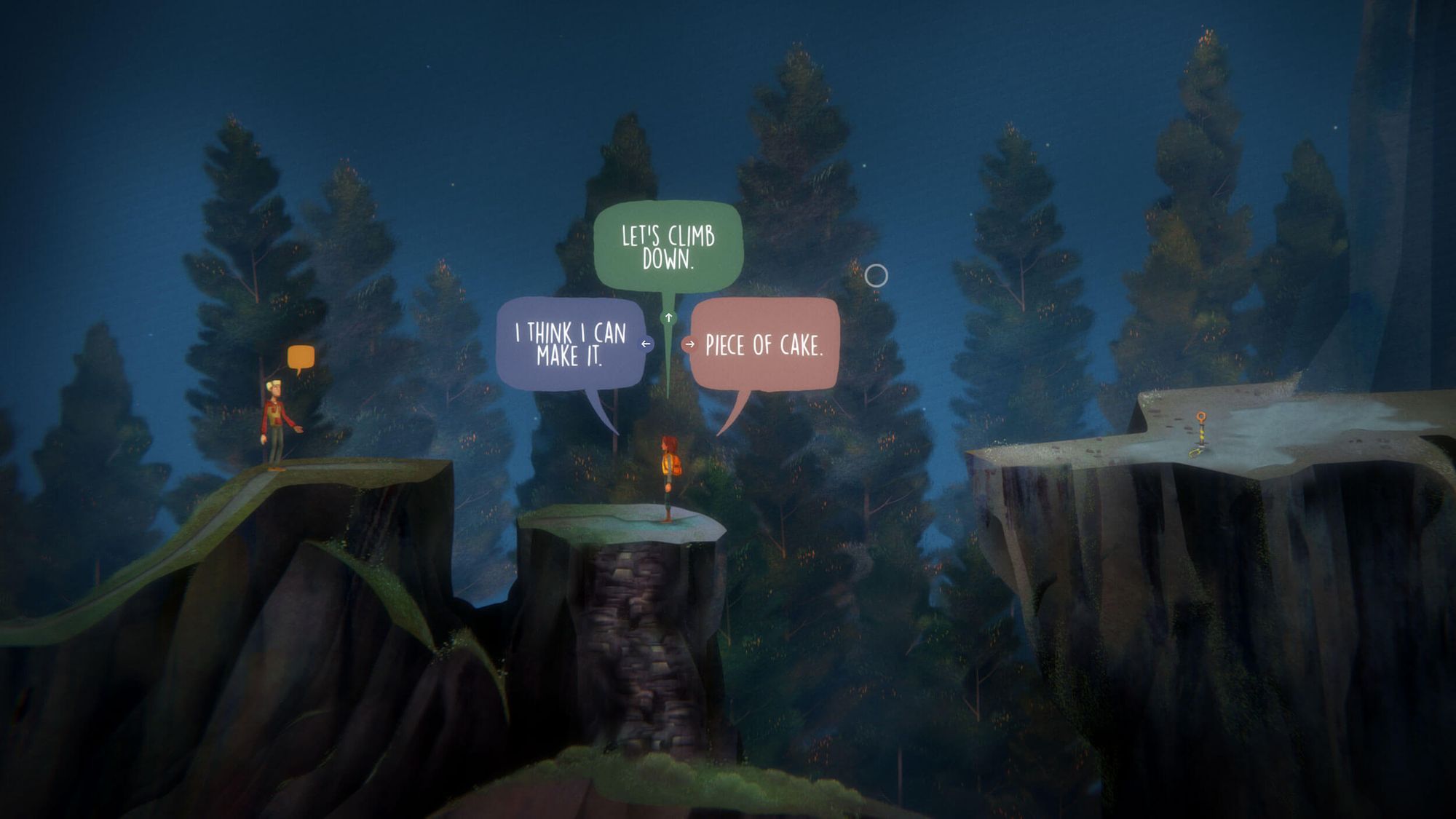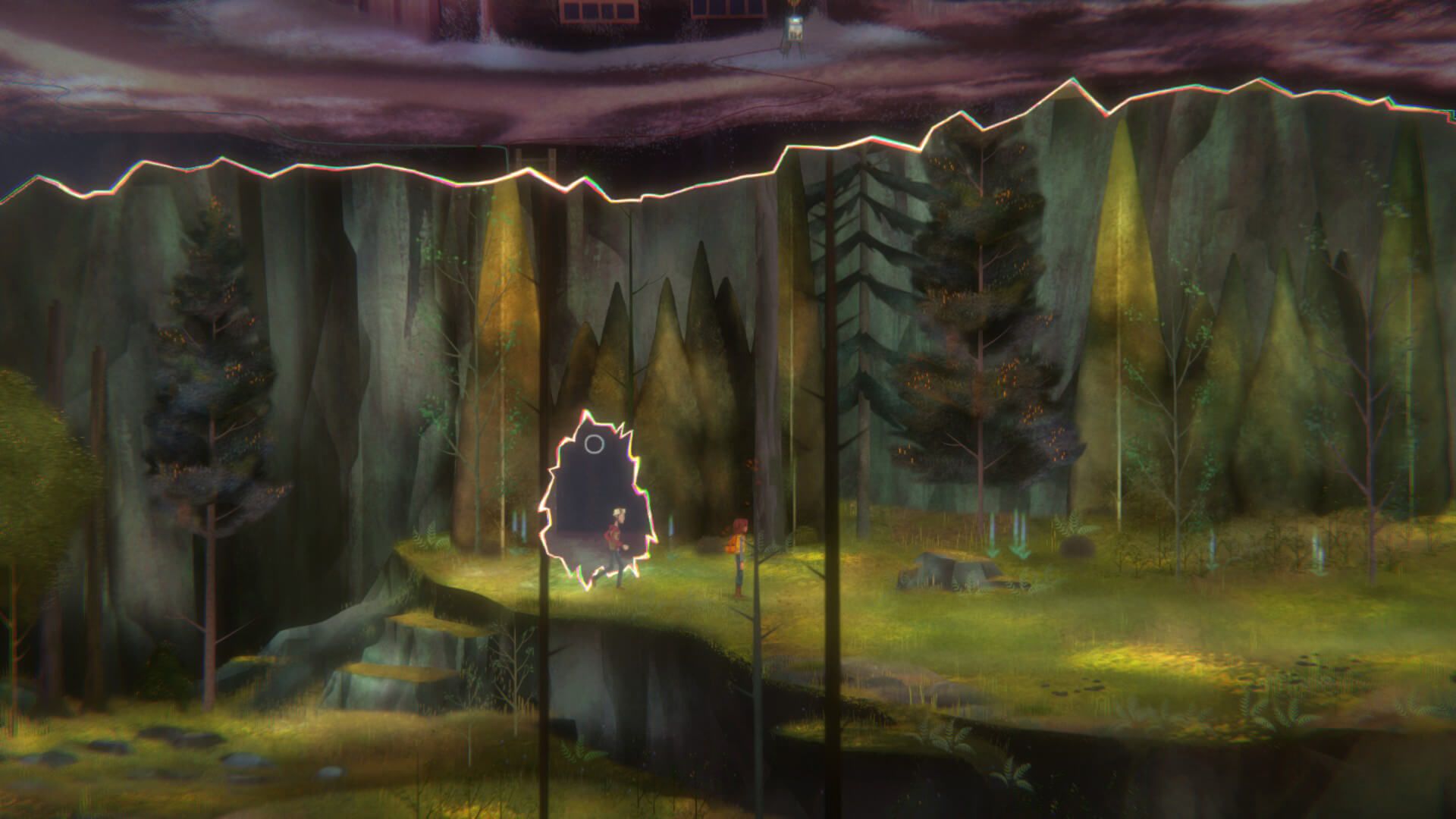The Making of Oxenfree II: Lost Signals Soundtrack
SUPERJUMP sits down with scntfc to chat about ARGs, defunct tech, and breathing new life into the hauntingly familiar sounds of Oxenfree

Since 2016, when Oxenfree came out and almost instantly became an underappreciated indie gem putting Night School Studio on the map, Andrew Rohrmann (a.k.a. scntfc) has received all sorts of praises for his "hauntingly beautiful" score.
But so far, nothing beats the lead writer of Oxenfree II, Adam Douglas, admitting he's been such a fan of the original soundtrack that he wrote while listening to it even before being pulled into the paranormal fever dream that is Oxenfree universe. And Rohrmann seems to agree: "That's one reason I think it is important to have music involved as early as possible in the development process. Gotta help build the house, not just paint it when it's almost done!"
For those of you who are not familiar with this Netflix-published sequel, Oxenfree II revolves around Riley and Jacob, two accidental 30-somethings whose easy gig of placing radio transmitters quickly turns into a Stranger Things-esque nightmare. No surprise, given that events take place in Camena, the hauntingly desolate coastal town where the pair grew up not too off from Edwards Island - the same island where a bunch of tipsy, daredevil teens do what they do best and mess with the otherworldly forces beyond one’s control.
For a game that is as much about walking-and-talking as it is fiddling with gadgets that should help players escape this Groundhog Day-meets-Twin Peaks madness (scntfc's music isn't the only thing that's looping), Oxenfree II proves to be the perfect setting for Rohrmann, who is as geeky about messing with defunct audio tech as he is about "digging deep with his references," to flex his sinth-y muscles once again. Such a good fit, in fact, that since teaming up with Night School Studio for their debut, Andrew took the helm as the game's audio director, giving him more time and space to bring fans of the original even more haunting experience.
So it's been seven years since Night School Studio (now part of Netflix's family) made its mark and a couple of years since I last sat with Andrew to discuss his interstellar masterpiece, JETT: The Far Shore (which had no right to get its Best Audio award stolen by Resident Evil: Village at the Golden Joystick Awards). Now we meet again to chat - then chat once more - about giving familiar sounds a fresh, mature take before Zoom fails and we're left with no recording. Which I suppose is apt, given that half of the electronics happen to break in Oxenfree's world.
SUPERJUMP: In one interview you said "I can’t do the same thing over and over – every project has to have some aspect of expanding and learning, whether it’s a new instrument or a new style of music." In that sense, can you explain how you approached making music for Oxenfree II? How did you challenge yourself this time around?
scntfc: It was really fun to extend and evolve the music from Oxenfree I to match how the characters and setting had developed for Oxenfree II. A bigger location; and primary characters who are a good bit further along in their lives than Alex and her crew. The music had to "grow up" in a sense.
Also, we had the opportunity for the music to be much more adaptive this time around, so developing arrangements that could more closely match the progress of drama and action was a fun challenge.
SUPERJUMP: Since Lost Signals revolves around adult protagonists, what elements did you focus on to make the sequel sound more mature?
scntfc: The more upbeat nature of tracks like "Epiphany Fields" were used to set the "teens on an adventure" tone, and that mood had to be left behind. Overall, I think everything is just more... subtle? Not necessarily more sophisticated, but low-key and less overt.

SUPERJUMP: Right, and does it take more discipline to keep up the quality and creativity of the original work than to create something brand new?
scntfc: There are different elements to it. On the one hand, there are more pre-established "rules" that should be followed. But on the other, sometimes a totally open field of possibilities can be just as difficult to grapple with, and in the end, even for a new project I always establish some rules that the music should follow: instrumentation, melodic style, the types of keys, chord progression, etc. that fit a particular project.
Then it's a matter of maintaining those rules as consistently as is appropriate. So I suppose it's a draw; discipline is about the same. The added bonus: I love the world of Oxenfree so much that it was really fun to revisit.
SUPERJUMP: One of the biggest additions to the game is the walkie-talkie. Knowing that you're a research-based composer, how did you go about making the walkie-talkie sound so crunchy, let alone a wee bit haunted?
scntfc: This was a not-so-simple matter of researching the functionality and sound quality of real walkies, and duplicating those things in-engine. It is ultimately a mix of real recordings - static, clicks, squelch, etc. - mixed with on-the-fly processing of the dialogue in order to duplicate the sound quality as closely as we could.
SUPERJUMP: What 'toys' did you get to play around with while working on Oxenfree II? Any interesting stories/outcomes from these experiences?
scntfc: New to Oxenfree II was an FM transmitter that allowed me to broadcast music, dialogue, etc. over the air and re-record it with a radio receiver. This was used throughout the game but is most apparent in the end credits soundscape.
All of the music and sounds heard drifting in and out of range, fading into distortion and static, etc. are "real" artifacts of over-the-air broadcasts.

SUPERJUMP: I might've said the same thing about your JETT score, but one of my favorites from the score must be "Copper Creek" because it gets very Hans Zimmer-y by the end - something most players can only experience while listening to the score outside the game. Do you often think about the parts of your music that don't make it to the actual gameplay?
scntfc: Oftentimes music has to be written, arranged, and "designed" to cover all the possible ways that a player might play a game. This results in many pieces being longer than what many players will experience.
But! If they just stand in place in the game long enough they will hear it all; but yeah for many players they'll miss it... That's what the soundtrack is for!
SUPERJUMP: Like with the original game, before the release of Lost Signals, you guys launched a brand new ARG. Could you tell me a little about it and what it was like to work on it? How did you come up with the idea to add new transmissions in Oxenfree I?
scntfc: The original ARG set up enough of an expectation for a potential sequel that we really felt we had to do something. We started out with a series of clues to announce Oxenfree II initially, and as the world of Oxenfree II was developed - specifically the mythology behind the cult "Parentage" - the more it seemed like a perfect thing to explore as the ARG progressed.
I've always loved the idea of supposedly fixed things actually being impermanent. So when the idea came up of inserting audio into the original game, I just knew we had to do it. Not only is it simply a fun idea, but it fits perfectly into the structure of our world: that broadcasts from the time period of Oxenfree II could bleed into a time loop and be heard at a prior point in time.
SUPERJUMP: If Night School Studio would go about making Oxenfree III, do you think you would have enough ideas left to toy around with?
scntfc: The more I've worked in the Oxenfree world, the more it seems endless to me. So, yeah I'd be happy to do more.
Thank you to scntfc for making time for the interview(s) and his insight into the creation process Oxenfree II. The game is available PC and all major consoles.